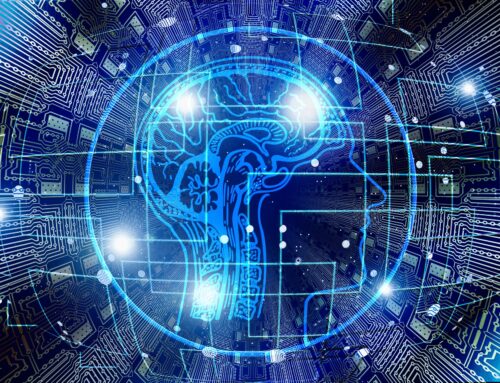Some thoughts about the future of scientific observation
Hardin Tibbs, 2018
To download a pdf, please click here.
Thinking about the future of science might seem futile, since future science by definition consists of knowledge we do not yet have. But it is worth recalling William Gibson’s comment: “The future has arrived — it’s just not evenly distributed yet.” Science is a socially determined activity as much as a purely knowledge-driven one, so it is very probable that new knowledge already exists but remains stuck on the periphery because it does not fit established ways of thinking.
Science as a whole has expanded very rapidly over the last hundred years and is now beset by significant conceptual lags between disciplines. Quantum physics is at the forefront of a potential new paradigm but the wider culture struggles with its implications. Meanwhile, other scientific disciplines continue to operate on the assumptions of classical physics as a matter of convenience.
If the future of science is already partly here, it may not be evenly distributed because its acceptance depends on the reexamination of fundamental assumptions. Arguably this even includes the nature of scientific observation, a basic building block of all science.
Science is based on close observation of physical phenomena, with the aim of understanding their nature and source. Hard sciences such as physics work with phenomena that are considered external to and separate from the observer. The scientist is supposed to be an impassive objective observer – rather like noticing the editing and camera work of a film rather than getting caught up in the story.
The phenomena being observed are considered as part of a reality which is presumed to exist independently of the observer, though the observer may be able to influence it to some degree. Not only are the observer and the observed thought of as separate, but the phenomena being observed are also classically regarded as separate from each other. This conventional mode of scientific observation can be thought of as “externally directed”.
But there is another realm of human experience. In addition to experience of an “outside world” there is experience of an “interior world”. This interior experience consists of phenomena such as thoughts, emotions, memories, dreams and perceptions. These phenomena are the focus of so-called “soft” sciences such as psychology and they are also a major area of interest in philosophy.
Scientists would ideally like to observe this interior world in the same way as the outside world. External phenomena can be detected and measured, and the measurements analysed mathematically. Interior phenomena are not so accessible. It is not possible from outside to access a dream or a memory in the subjective form in which it is experienced. But brain states can be detected and measured, and the neural correlates of mental experience can often be identified. Precisely because they can be detected and measured, brain states are frequently taken as the appropriate scientific observables of interior experience.
A scientist observing someone else’s brain turns interior phenomena into exterior phenomena by approaching that brain as an external object. Inner experience is thought to be produced by the collective activity of neurons and the actual inner experience of the observer becomes little more than a side effect. In this way, scientific reduction is applied, breaking down the interior phenomena into their supposed underlying causes.
But there is a catch. Cognitive activities such as scientific theorising involve an interior experience of comprehension that cannot itself be detected in the neural correlates of theorising when observed from outside the brain. Indeed, all of science depends on interior cognitive phenomena such as understanding that cannot be detected when the brain is observed from the outside. By treating interior phenomena as exterior phenomena we are attempting to understand our own understanding by reducing it to other phenomena in which the understanding can no longer be seen.
The human brain is an information processing system and many neuroscientists take the view that subjective experiences such as understanding will turn out to be the emergent outcome of complex information processing, much as a computer can produce complex outputs from the simple digital components of 0s and 1s. The objection to this line of argument is that subjective experiences require a conscious self that is aware of its own internal states and experiences. However information-rich the computer’s output may be, there will be no understanding unless there is a conscious self to understand it – a position philosopher John Searle argued for in his famous “Chinese room” thought experiment.
Many computer scientists believe that computers themselves will become conscious if they are organized like the brain and if they are powerful enough, a position called “strong AI” by Searle. Even supposing this may happen in the future it would be difficult to establish. If consciousness is necessary for the experience of interior phenomena, and if interior phenomena cannot be directly observed from outside, how would we even know if a computer became conscious? Would it tell us it is conscious, as a human being might? Could we trust such self-reporting as a reliable phenomenon for exterior observation when consciousness itself cannot be observed from the outside?
The enigma of interior experience will almost certainly remain intractable as long as scientists observe interior phenomena from the outside. This is why philosopher David Chalmers famously called consciousness “the hard problem.” Trying to explain the subjective experience of consciousness by deriving it from the contents of its own awareness – externally observed phenomena – seems an inherently implausible move. If consciousness is a bottom-up effect, built up from simpler components, then we have no idea what could possibly constitute a “component” of the seamless subjective quality of conscious experience – other than rather questionable ideas such as that consciousness arises from logical operations. Without this knowledge, the strong AI position involves a circular act of faith in which externally observed phenomena – which are only known through the medium of conscious perception – are held to be the cause of interior conscious experience.
There is a long history of theorizing in philosophy about whether the external physical world or the interior mental world represents the true nature of reality. The prevailing scientific consensus is that the external world of experience is the real world, despite the difficulty that all scientific observation of external phenomena requires an interior phenomenon of meaningful perception. This question is a live topic of debate in the philosophy of physics but with no immediate prospect of agreement. Meanwhile, regrettably, the dominance of external observation is tending to suppress insights arising from interior experience.
Scientific research does not necessarily have to wait for the disagreement about the two types of experience to be resolved. One way to sidestep the impasse would be to think about the outside and inside worlds as merely two different modes of experience. There could be two equally valid directions of scientific observation: “externally directed” observation and “internally directed” observation, without attempting to establish one as better or more real than the other. They would be two alternative ways of seeing, reminiscent of the interior and exterior perspectives proposed by writer Ken Wilbur. Inward observation would essentially be a conscious self observing the contents of its own consciousness and taking their felt value and meaning as primary or irreducible elements of observation. The externally observable neural correlates of interior experience would then be simply that – correlates, not causes.
To a considerable extent this is what psychology has done, but psychological phenomena are still persistently regarded as ultimately caused by physical phenomena that can be detected and measured by external observation. The observational bias, even in psychology, is that the “real” world exists to the outside of conscious observers and psychological phenomena are interpreted as merely an emergent side effect of brain functioning.
Seen through the lens of internally directed observation, consciousness becomes the fundamental property that enables observation itself – it appears as an ontological primitive, a primary feature of reality which cannot be broken down into anything else. Thoughts, memories and dreams become not the product of external material processes but phenomena or qualities intrinsic to consciousness, to be encountered as the basic content of interior experience and observation.
In a binocular combination of interior and exterior observation, exterior observables would not be “more real” than the interior ones. The interior ones would not have to be constructed from the exterior ones. They would simply be two aspects of reality meeting in conscious experience.
If exterior and interior observation were used in tandem this could well lead to breakthroughs for science as a whole. Many aspects of experience that are currently discounted as merely subjective could be revalidated and revalued. The two directions of observation would support complementary hypotheses which could be experimentally evaluated.
Quantum theory, for example, could benefit from interior observation. Quantum effects are weird when viewed from the perspective of external observation because it posits a universe of separate phenomena that exist independently of awareness. Quantum paradoxes might make more sense from the perspective of interior observation, in which existence and awareness are intrinsically related.
Certain experimental findings suggest quantum effects are the result of an interaction between quantum-level reality and consciousness, but this idea has met with considerable resistance. As a line of thought it is blocked by the assumption that externally observed “physical” reality could not be affected by consciousness because it is “more real” than the interior phenomena of conscious experience. Adopting the perspective of interior observation could help us to take puzzling quantum effects at face value. This will not be easy: we have a deep assumption, inherited from an earlier stage of science, that the arrow of causal dependence runs from outer to inner experience. Possibly quantum theory is exactly the frontier where empiricism can only advance if we allow ourselves to treat interior and exterior phenomena on at least an equal footing and begin to ask if just possibly the causal arrow might point the other way.
Internal observation would challenge other widely held assumptions. The perspective of external observation gives rise to the idea that consciousness must be generated from components that are themselves unconscious. This leads to the assumption that only brains, and maybe only human brains, are conscious. But seen through the lens of internal observation, consciousness appears as a primary feature of reality, which leads to a quite different assumption. From this perspective, we should expect to find consciousness everywhere in the universe at all levels. It would become the prerequisite for existence of any kind – after all, without consciousness nothing can register as existing, which is indistinguishable from a situation in which nothing exists.
Furthermore, internal observation could open the door to taking the paranormal more seriously. Such things as psychic and spiritual experiences could be explored without the preliminary requirement of having to explain them in terms of phenomena that can be observed externally. They would be valid interior phenomena to be investigated in parallel, internally and externally, without rejecting them because they are only “in the mind”.
Looking to the future, science appears to be under growing pressure to open up to a broader view of observable reality. Quantum puzzles and other anomalies that now confront science, not to mention the advent of artificial intelligence, place the nature of human understanding and consciousness at the frontier of science. If scientists insist on the perspective of exterior observation alone, this is likely to hinder the further significant advance of science. If in the future scientists adopt something like the mode of interior observation proposed here, a new frontier would open up, and an expanded philosophy of science could lead to advances in theory and breakthroughs in technology.
Posted on www.hardintibbs.com


